Text
Moorland Research Notes
I usually let these sit in my drafts because they're kinda messy, but no one actually knows anything about moorland, including myself shortly before starting this deep dive. So I'm just going to post this in the hopes that it's useful in some way
This post is about moorland in the UK, I have not done any research into moorland in other places, and then I focused more specifically on lowland heath.
Feel free to use this information for anything you so desire, and check out the sources I put at the bottom of this list if you'd like to learn more. I really hope this helps out WindClan Fans in particular
I do plan to condense what I've learned and chosen into a "Welcome to BB!WindClan!" type post at some point, but this is a REALLY broad post on what moorland is.
What is moorland?
Moorland is a broad term that lumps together several completely unique biomes, most of which are partially or completely reliant on the management of human beings. They are defined by low-growing flora and acidic soils, which makes them difficult for non-specialist plants to grow in.
These can be sorted further into upland or lowland, dry or wet.
Because many types of moorland are dominated by heathers, they are also called heathlands. Though the terms Moor and Heath are sometimes used interchangeably (and this is where a lot of confusion comes from), usually, Moor refers to upland/wet, and Heath refers to lowland/dry.
I have to stress a that LOT of the confusion is coming from this. Heather will grow in both, and the terms get used interchangeably, but an upland/wet moor is FUNDAMENTALLY different from a lowland/dry heath, down to the very soil.
Most specialists will open up an explanation by defining how they're using the Moor/Heath distinction, and will stick to those terms, but just keep in mind that in casual language, ALL of these biomes get called moors, and places without any heather will get called heath.
They can also touch. There are locations where upland moor slopes into lowland heath, or upland heath kisses lowland moor, and there can be very special species that exist in the transitional space between these areas. This too is yuri.
It is not a prairie. It is not a savanna. Please for the love of god stop portraying moorland as prairies and savannas
lots of purple. why he ourple? heathers and purple moorgrass.
Common heather is also called ling, flowery bell heathers are sometimes called erica, and gorse can be called whin or furze
Maritime heath, dune heath, blanket bog, upland moor, transitional upland heath... these are all frequently lumped under the same term even though they are very different.
How are moorlands managed?
Above 700 meters of altitude and in harsh weather conditions, you get montane heath. Near coastlines, you can find maritime heath. These are the only two that are completely "natural" and require no human management.
In wet moors, the elements will beat the vegetation down into peat. Above the peat is turf, the top layer which grows the visible flora. Peat = below, Turf = above. Peat has historically been used as a fuel, and if that bottom layer catches fire, IT IS DISASTROUS.
Because of this, most upland moors (which are usually wet and PACKED with peat) are managed primarily through grazing. There are even breeds of sheep and cattle who have been specially bred to thrive in upland moors-- such as the iconic highland cow. (Though overgrazing can be a problem, too.)
Sheep are used to graze back the heather (sometimes called ling), and in good modern practice, goats are brought out along with the flock to eat pioneering shrubs and saplings. Pigs are also used to control bracken and combat ex-pine plantations with scattered needles, because of their ability to churn soil.
However, controlled burns are still done in some circumstances and when required (LIKE BEFORE A HEATWAVE). Because of the serious danger, it's considered inferior to good grazing management. It's done carefully, in controlled patches, both to not set the underlayer of peat on fire and to make sure there is differently-aged patches of flora in one area to support different species of animals.
If peat catches on fire, it will burn for days or weeks... and can even smoulder underground after you THINK it's been put out.
In DRY LOWland heath, proper burning is common. Gorse and heather grows strong, woody, and flammable, and the thin layer of peat below can combine to devastating results when a wildfire does eventually break out. Large swaths of dry heather and gorse is an ecological powderkeg, even if it was only growing on mineral soil.
Worse, the older heather gets, the woodier it becomes. Woody heather can cause high-temperature fires that absolutely devastates new growth, leading to a slower recovery and causing a controlled burn to become uncontrolled real fast.
Burns are typically conducted in winter, when it's cold, and grazing animals are deployed in summer.
Cutting is also important in lowland management, literally cutting out squares of turf to expose the ground. This is good for mason bees, specifically.
Moorland. Is. Flammable. Fire risk = HIGH.
If you do not manage the moorland, the moorland will manage YOU. with FIRE.
Do NOT set the peat layer on fire. Whatever you do, do NOT let the peat get set on fire. PEAT FIRE BAD.
The controlled burning of moorland is "swaling", or a "muirburn."
Pigs and goats have special abilities when used in grazing management
Pigs are a tactical nuke
Sheep will graze heather a lot harder than cattle, causing grassy "sward". They should be kept away from it in winter.
MOORLAND IS NOT GRASSLAND. Sward BAD.
Cattle will graze moorgrass a lot harder than sheep and bite back any sheep-induced sward, but trample the soil with their heavy hooves.
Bones tell me about the funny cat environments
Victoria Holmes (the original writer of Warrior Cats, for those who have just walked in, still in your bathrobe and perhaps comically eating some sort of breakfast bagel, on a cat giving a detailed ecological lecture to a bunch of other cats) has spoken about how she based the environment of the Forest Territories on New Forest, Hampshire UK.
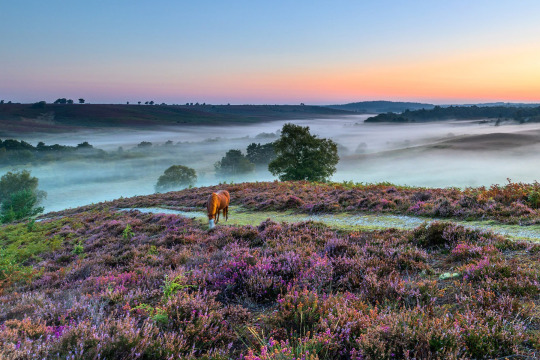
[ID: New Forest's heathland on a misty morning. It's dominated by common heather with a few sparse trees, and a New Forest Pony grazing alone.]
That means that WindClan's moor was a lowland heath, characterized by sandy soils with excellent drainage. This is consistent with the thin layer of peat, deeper layers of sandy soil and clay (as encountered by tunnelers), and lush vegetation that's seen in DOTC and Tallstar's Revenge.
If that's not enough evidence, it's also described after its destruction in these terms;

New Forest boasts some of the widest swaths of well-managed lowland heath in the entire UK. It's been managed collectively for hundreds of years, and exists in tandem with bogs and old-growth forest for miles. The heath is just as important as the trees, here!
In TNP, the forest is tragically bulldozed to create suburbs. While they were at it, they also bulldozed the geography of Great Britain because, suddenly, there is a MOUNTAIN in Southeastern England; a region notoriously flatter than the Onceler's ass
So once the Clan cats get to the Lake territories, we could be dealing with a completely different biome. They might have gone from dry, lowland heath, to wet, upland moor.
However, descriptions of the new territory are scarce, to put it lightly. In spite of the Lake Territory being the setting for the past 20 years, WindClan's land is rarely shown. When we do get a glimpse of it, like in Crowfeather's Trial, we only get told about the presence of certain species such as gorse. Because of there being no tunneling, we don't know what's exactly below the surface, either.
Occasionally though we are made aware of the presence of "moorgrass" (possibly Molinia Caerulea) and the smell of peat, pointing towards it probably being upland moor. The bigger question is actually where all the sheep are? There should be a lot of sheep here, but instead, there only seems to be horses.
Aaaaand lastly before I close out on canon material, Lungwort.
Lungwort is a herb that becomes a plot device in A Vision of Shadows. ShadowClan becomes sick with a variant of greencough, and it is said that Lungwort would be its only cure. However, it "only grows in WindClan" and the leader, Onestar, has refused to let them have this medicine.
But lungwort doesn't grow on moorland. ESPECIALLY not wet, upland moor, which we might maybe possibly be dealing with now.
Lungwort is a FOREST plant, it needs the absolute opposite conditions of a moorland. It requires moist but well-drained ground, FERTILE soil, and full or partial shade. There's no way that WindClan has it and ShadowClan doesn't, OR its neighbor ThunderClan, in the WOODS, who Onestar has no power over.
It would also poison a cat but honestly 75% of the plants they use in canon would also do that, so, whatever.
What they SHOULD have gone for is great mullein which prefers full sun and well-drained soils, so it could feasibly be found best in some parts of WindClan, regardless of which sort of moor or heath primarily makes up their territory.
What sorts of plants are found in moorlands?
In moorlands, you'll find plants that can withstand poor soil quality and full sun. In upland moors, they also have to be hardy in frequent heavy rains and high winds. Because it has conditions that so few plants are able to handle, moorland is chock-full of specialists and unique species that aren't found anywhere else!
Historically, moorland could not be used for agriculture exactly because of this. With the invention of artificial fertilizers and introduction of (invasive) pines from America, moorland is under serious threat. Even if it's just next to a pine plantation, the trees will attempt to spread.
COMMON HEATHER, also called Ling, is the big bad boy associated with most moorland, and used for a bajillion different things. First of all, it was used in construction for thatching. Second of all, it can be used as a yellow dye, especially on wool. Third, honey made from heather pollen is as thick as jelly. It's found on all sorts of moorland, and is an extremely hardy species.
BELL HEATHER, sometimes called Erica, is more commonly associated with lowland heaths. It's one of the best flowers for pollinators in the entire world, and attracts tons of insects.
GORSE, also called Whin or Furze, smells overwhelmingly like coconut. It is also covered in wicked thorns. It's highly flammable and can burn ridiculously hot, making it excellent to collect as kindle.
PURPLE MOORGRASS is associated with upland moor, but will grow basically anywhere nothing else could. It's scary hardy, surviving in acidic soil down to a PH of 2 (THAT IS THE SAME LEVEL AS YOUR STOMACH JUICE), and can grow as tall as 4 feet (and even taller, apparently, next to its bestie girls heather and gorse).
In heath, tormentil, milkwort, and heath bedstraw are indicator herbs, and wavy hair-grass, bristle bent, and vernal grasses are found here and there.
PLEASE remember that moorland is not grassland. When grasses go from sparse to common, it's a very bad sign. It means the soil is losing its acidity, and converting into a different biome.
Bramble, bracken, nettles, perennial ryegrass, and broadleaf plantain are some of the species that can indicate that a heath is becoming a grassland. A few patches or examples are fine, but if they're eating into the gorse/heather/moorgrass, it's time to call in some management.
There's also the fascinating, parasitic plant called dodder. Dodder likes to twirl around heather before suffocating it to death. Cool plant! I don't know where else to mention dodder. I just think it's neat.
Threats to Moorland
I mentioned the problems in passing through this whole post, but to restate, these are some of the major problems that moorland faces.
AFFORESTATION: When trees are added.
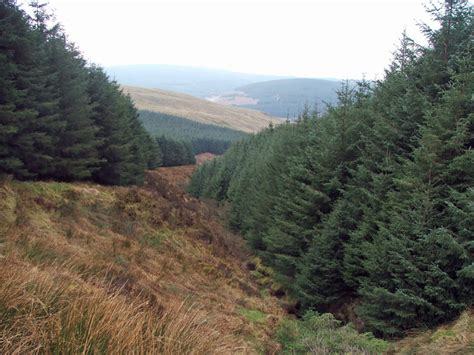
[ID: A sitka spruce plantation on upland moor in Scotland, followed by a clip of Markiplier who condemns it in no uncertain terms.]
American pines, such as the douglas fir and sitka spruce don't belong here. These are commercial plantations and they exist to make money, but are touted as "eco friendly" because uneducated rubes think 1 Tree = 1 Ecology Point. They provide diddly or squat to native wildlife, destroy valuable moorland which can negatively impact carbon capture, and let fools pat themselves on the back for doing nothing but put government money into a logging company's pocket.
(there are also only 3 native conifers to Great Britain-- the scotch pine, the common juniper, and the yew. All others are introduced.)
But even worse than being a wooden blight, these are wooden blights that spread. If there's a plantation nearby, it WILL begin to encroach on the surrounding moorland, and the traditional sheep and cattle will not eat the saplings. GOATS are being added to herds in modern grazing management to combat this new problem.
The native birches (silver and downy) plus the scotch pine will also move in when moorland is not managed! They are pioneer species, which success the moor into secondary woodland.
OVERBURNING: When moorland is burned too much.
Even if you don't set the peat on fire and cause an even bigger problem, too much burning is bad for the biome as well. This is often done to serve hunters, who want to perpetually keep common heather in the youngest state possible to support grouse populations... and grouse populations alone.
Properly managed moorland will be burned in sections, NOT all at once, so that there's a healthy mix of plants in different ages to provide shelter and food to the animals that live in the environment. Too much burning will decimate the insect population, and prevent peat buildup.
("Hold on Elder Bones, why is peat good?" Carbon capture and soil acidity! It's super efficient at combating global warming, and peaty soils will prevent the moor from quickly succeeding into a grassland.)
NUTRIENT ENRICHMENT: De-acidifying the soil and making the soil welcoming to other species
Specifically from dog and horse droppings, but also from the addition of fertilizers. The biggest thing that can be a problem here is how conservationists try to balance public access to these spaces with the "recreation pressure" from having too many visitors.
SOURCES
I have had to do SO MUCH READING. OH my god, this was not easy research, please appreciate this big, beautiful list of resources I am giving to you
GREAT BRITISH LIFE: A really good intro to heathland (This article was written by Katie Piercy from the Cheshire Wildlife Trust)
WILDLIFE TRUST: Heathland and Moorland, Moorland, Lowland Heath, Cheshire Heath, Bell Heather, The Roaches
BUGLIFE: Upland heath as it relates to insect populations (website contains insect-centric guides to many unique UK biomes)
NEW FOREST: Heathland information and history
NATIONAL TRUST: Bickerton Hill and the Restoration Work
WIKIPEDIA: The Roaches, Yorkshire Dales, Heath, Moorland (listen kids, wikipedia is always a great place to start. Just make sure to double-check the claims you see there.)
COUNTRY LIFE: A flowery article that describes the North York Moors (this one's just really pleasant!)
AN ACTUAL LOWLAND HEATH ECOLOGIST: Dr. Sophie Lake's Presentation for the NPMS (This is the most detailed and proper source on this list, if you want to learn some serious info, PLEASE check this one out)
216 notes
·
View notes
Text
Malleus and Sebek if d*sney wasn’t a pussy.
in shitty edit form!.

explaining myself:
for Malleus it just straight pisses me off when Maleficent and characters based on her are de-greened. her green skin is so iconic and gorgeous and really sets her apart so when it’s just removed and replaced with plan white skin it makes the design less striking i also made his hair darker and tinged it purple a bit because it was more blue then black and i wanted it to resemble the dragon form. purple eyeshadow because his original green would disappear with the green skin and eyes, maleficent had purple eyeshadow and it’s the color of royalty.

now for Sebek his grandfather is a crocodile man form sunset savanna ie twst!africa and his story literally revolves around him being mixed race even if it’s in a fantasy fairy sense and he spends most of his time training to be a knight most of which would be out side so it makes absolutely no sense for him to be so damn pale. so i gave him greenish-brown skin cus crocs are green/brown, with patches of greener areas like on his nose bridge and sideburn area to jaw which i like to believe where he’d grow scales as he ages. + yellow eyeshadow cus again the green would get lost and yellow = lightening.

that’s all. hope you like them.
#twst edit#malleus should’ve been green#sebek zigvolt#malleus draconia#twisted wonderland#disney twst#disney twisted wonderland#🦷teeth jar
36 notes
·
View notes
Text
Unit 05 Blog Post
I was brought up in Eldoret, a town that rests in the heart of Kenya, near one of the greatest natural wonders on Earth, the Rift Valley. The sheer scale of the Rift Valley, the largest of its kind, has always been a breathtaking sight for me. Spanning thousands of kilometers from Lebanon in the north to Mozambique in the south, the Great Rift Valley runs through Kenya, carving out a beautiful landscape that is both vast and rugged. Its significance in shaping nature and the lives of the people who live near it, including my own, is immense.

An image of the Rift Valley captured from the valley floor. See if you can spot the waterfall in the image above.
As a child growing up near the valley, I remember standing on its edge, staring into the seemingly endless horizon. The Rift Valley is more than just a geographical feature; it is a living, breathing ecosystem that has a dynamic relationship with the wildlife, vegetation, and communities that inhabit it. The valley is a cradle of biodiversity, home to a range of ecosystems from dry savannas and wide grasslands, dramatic escarpments and fertile plains.

An image of the Rift Valley taken from the edge.
Nature in the Rift Valley is something I came to appreciate deeply. The valley is a host to countless animals, including some of the most iconic species of East Africa, such as elephants, giraffes, zebras, and lions. The wide plains of the valley offer these animals plenty of space to roam, and it is not uncommon to witness them in their natural habitat when visiting nearby national parks like the Maasai Mara. The Rift Valley lakes, including Lake Naivasha and Lake Nakuru, are vital water sources for these creatures, making the valley a true haven for wildlife.
The valley's landscape is marked by dramatic features that are a testament to the forces of nature at work over millions of years. The escarpments, which rise steeply from the valley floor, provide stunning views that capture the vastness of the land. Standing at the edge of these cliffs, one can appreciate the sheer scale and geological history of the valley. It’s humbling to think that the Rift Valley was formed as a result of tectonic forces, with the earth’s crust pulling apart, creating the gaping chasm that now defines the region.
The beauty of the Rift Valley is not only in its grand scale and geological significance but also in the subtle details of everyday life. Whether it’s the cool breeze that sweeps down from the escarpments or the vibrant sunsets that light up the sky, the valley has a way of making you feel connected to something ancient and enduring. It is a constant reminder of the power and beauty of nature, a place where one can feel small yet part of something immense. Growing up near this natural wonder has shaped my view of the world, giving me an enduring love for nature and its complexities.
8 notes
·
View notes
Text

Savanna Nights. Icon for oliphant on mastodon
commission info | patreon | shop
27 notes
·
View notes
Text

Obviously, there are species out there that aren't that well known. Some because of their remote location, or rather mundane looks. Some, however, get cast aside from the public mind purely because their brethren shine so much brighter. Relatives that have flashier looks, cooler abilities or are just straight up bigger, causing the others to be lost in their shadow. For example, if I were to say the word "basilisk" what would be the first thing to come to mind? Would it be a big serpent with a deadly gaze? The Grand Basilisk? In most cases, yeah, people are going to think of that one, not the lowly swamp basilisk or cave basilisk. That isn't to say that those are any "worse," it is just that people focus on the bigger and badder members of their family. For this entry, I point to the griffins. I say "griffin" and you think of those proud and noble birds, of the greatest traits of lion and eagle fused into one magnificent beast. Those wings! Those claws! No wonder they are on so many banners, shields and crests! And then I say to you "keythong" and you say "what?"
To be fair, keythong don't get brought up a whole bunch because of their odd name. It is not a common one heard around the taverns or schools, so when someone actually says it, folks think their tongue just slipped. And if it doesn't have "griffin" in the name, then how can it be a griffin?! Well, in truth, it isn't exactly a true griffin, but a close relative to them. Their lack of big ol' wings kind of makes that a bit obvious, and another reason people don't think about them a whole bunch. Birds as a whole get a lot of love for their wonderful wings, and losing those means losing points for some people. I don't agree with those people in the slightest, but I can't ignore the fact that that is kind of a thing. Flying? Now that is wonderful and special! Walking? Everyone can do that! And indeed, the keythong is a walker and not a flyer. Their third set of limbs that were once wings have long since been lost. Like griffins, they do still look like the fusion of a cat and bird, but one without wings. A beaked head, fore legs with talons, feathers and down so fine it looks like hair. And a whole lot of spikes. If keythongs lost their wings, then they made up for it in spikes. Bony spurs running down their backs, erupting from their shoulders, lining their legs and even barbed feather shafts giving their tails a spiny look. They bristle with this weaponry, making a pretty iconic look! At least to me!
This species lives in grasslands and savannas, stalking through the fields in search of prey and making nests from gathered grasses. They live in groups, with typically six to ten individuals in them. Keythong are highly social with each other, working together to hunt, raise their young and even partake in social grooming. When resting, they have been seen cleaning each other's spines, taking care of areas the individual cannot reach. When on the prowl, they act much like wolves, coordinating their attacks and ambushes. Low clicks and quiet whistles are how they communicate with one another, arranging the perfect trap to corner prey. When the time is right, an individual will rush out to scare their target and flush them into the waiting talons of the others. Sharp beak and claws tear at prey, and they will even use their large bladed shoulder spines against larger animals. A frequent strategy is for them to slow their target and then dash under the prey's stomach to gut them. When prey is brought down, the group will finish them off by clawing open the throat.
The hunters shall dine upon their kill, eating as much as they can. When they are satisfied, they will usually have meat left on the carcass. Rather than protecting their kill or abandoning it for scavengers, they will tear off the big chunks and spear them on their spines. This is typically done with teamwork, with one standing still while the others load them up with pieces of meat. This is all carried back to the nests, for either later consumption or to feed their young (typically called "cubs). The newborns will be fed regurgitated meat, since they are not strong enough to tear through flesh. The slightly older ones will feed on the brought back meat, picking it off the adult's spines so that it is easier for them to tear off pieces. Once all is consumed, then the social grooming and preening begins. Best to clean off all that blood and viscera!
While their sharp spines can be used to help hunt, many folk are surprised to learn that they are mainly for defense. Surely such a wicked looking creature doesn't have many enemies? Well, actually, they do. There are plenty of large predators out there, especially those that would happily take a vulnerable cub. A coat of spikes makes it hard to get a bite, and a spiny tail to the face can discourage a lot of venturous eaters. Interesting thing to note, though, is that the orientation of their spikes and the way they move to defend themselves suggests that their main fear comes from above. Those shoulder spines are perfectly oriented to impale anything dropping from the sky. Since they live in wide open grassy areas, they can be spotted from above, and there are large meat eaters that soar the skies. Pterorcus, dragons and even their own cousins! Indeed, griffins have been know to attack keythongs! What a betrayal! And to think people once thought keythongs were male griffins, and this was just violent courtship! But their spines and numbers work to ward off these attackers and keep their cubs safe. Even then, it isn't uncommon to find one on another beast's menu, especially if they are an individual with no group to call their own.
Though the popularity or knowledge of the keythong is not nearly as widespread as griffins, on a local level they do have some fans. Coat of arms and crests carry their visage, and their spiny appearance gives off an intimidating impression. Their feathers are loved for clothing and decoration, while their spines are valued for sharp hardy tools, like sewing needles, fish hooks and awls. Keythong eggs are considered a delicacy, though good luck getting your hands on one of those! Trying to raid what you think is an unsupervised nest will result in you getting a beak to the spine when the hidden watcher takes you down. Though folks can certainly gain a lot from a dead keythong, some folk have found a partnership with live ones!
The thing is, keythongs are incredibly smart and have a good memory, meaning they are excellent learners and can remember faces. Some folk have bonded with exiled individuals or have raised cubs from infancy. What forms is an incredible partnership, making them excellent hunting companions, trackers or just plain old pets. Writers especially love giving keythong companions to their lonely characters, as the symbolism of their spines and nature is perfect (though a bit on the nose sometimes). With their memory and smarts, they can learn a ton of commands and can even solve puzzles or figure out scenarios on their own. If you show them how to tackle a situation enough times, they can do it by themselves without prompting. They are very loyally and friendly, though you really need to watch those spines when they get close. Some folks trim these spines, but many argue that the spikes are the whole point (har har)! While I did make the keythong out to be incredible pets and companions, I should put out a warning. First off, keythong live for a looong time, way longer than your average cat and dog, especially when taken out of the dangers of the wild. So if you want a keythong, do know that they can live around forty to fifty years! And then add to that the fact that they are very social and very protective of who they bond with.
Once you get close to one and develop a deep bond, they will never forget it and also never forgive you if it is broken. Getting one is a major commitment, because once you get familiar with one another, they will not take kindly to new pets or partners, and will go crazy if you try to hand them off to another owner. Those who are separated from their beloved owners tend to become incredibly agitated and violent, often killing the new master and tracking down the old one. And if they finally return home and find you with a new pet or spouse, then you are next on the hit list. Do recall that these very same smarts and memory can be used against you. Packs of keythong near towns can become menaces once they figure out where the food is kept and the patterns of day to day life. They are good at picking off livestock, and also the occasional person who takes a specific route each day alone. And when retaliation or hunting of their kind occurs, they get a grudge and don't let go. Those who have successfully taken eggs or killed a keythong best watch themselves when they are in the wilds alone...
Chlora Myron
Dryad Natural Historian
---------------------------------------------------
"Keythong"
Wow, feels like it has been a while since a Chlora entry. Lets fix that! Also, I am sure making the keythong and griffins mammals would have made more sense than birds, but.....oh well.
47 notes
·
View notes
Text
on the sunset savanna event


Alright, so 🙏 In part 3 of the event, we learn that the trio that usually watches over Cheka are predisposed with something else. From the way Leona reacts to this news, it’s implied those three will be participating in Catch the Tail. The number 3 is also just sus because that’s the EXACT number of people needed to form a team for the competition. it’s highly likely we’ll see the NRC squad go up against Cheka’s trio of guards.
It is said that most of the important positions in the guard are held by women, as real lionesses do most of the hunting. This implies that those assigned to guard the young prince Cheka must be women; the nameless temporary replacement guards are also women.
Then… Knowing all of this, does that mean 👁️ 👄 👁️ We will get to see… mayhaps… new women in TWST???? Strong ass women who can kick your butt??? With unique artwork of their own????????
dbsksbsiwjsn I wonder if they’ll be twisted from any particular inspiration??? I’m trying to think of iconic trios from The Lion King, but I can only think of the hyenas (who probably wouldn’t hold a position that high up, if Sunset Savanna society is anything like that of Pride Rock)… The next thing I’m thinking of is Timon and Pumba, but that’s a duo. Maybe the third seat could be filled by… I don’t know, (grown-up) Nala? Rafiki????? I always thought Nala would be a 5 year old like Cheka, so I’m leaning more toward the other options.
OOOOh, or???? Maybe that trio IS twisted from the hyenas meaning Ruggie isn’t twisted from the hyenas???? Kifaji mentions that bird beastmen like himself are rare, and even Farena/Falena has difficulties uniting different kinds of beastmen. What if the hyenas worked their way up to this important position just like Kifaji was able to become Grand Chamberlain?? Keeping these opportunities open to beastmen of all kinds could be one way Farena/Falena tries to unite them.
I guess it could just as easily be three random lionesses too (there’s a whole group of them in TLK that help fight against Scar in the final showdown), but I’m praying to see more characters with explicitly named Disney counterparts xbasvjskwwnif I’m really excited to see how this turns out now!! 🤞
#just me rambling snd speculating#we’ll get confirmation eventually#Leona Kingscholar#Cheka Kingscholar#spoilers#notes from the writing raven#Timon#Pumba#Rafiki#Nala#The Lion King#Ruggie Bucchi#Shenzi#Kifaji#Kifaaji#Farena Kingschcolar#Falena Kingscholar#Scar#Neji
97 notes
·
View notes
Text
The Tamashina-Mina spoilers part 1
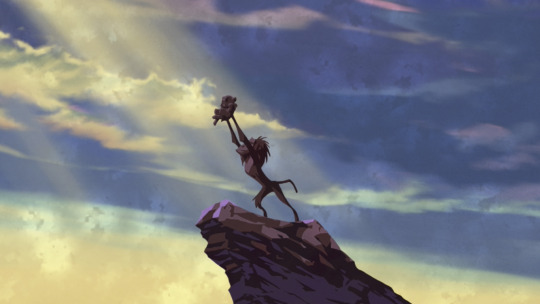
We begin with a very familiar scene. It soon transitions to the present day with said iconic scene now a fountain in the middle of a busy plaza from the looks of it.
Leona says that the world is unfair. He never imagined to end up on a bad trip in such a bad place. Vil reminds Leona it was he who invited him. He asks Leona rather than ruin the beautiful scenery, would Leona be silent like a rug?
Kalim says it really is beautiful all over. It’s spacious and nice. He’s happy to visit the place Leona was born and raised. Leona reminds Kalim they are not there to play.

Before Leona can reveal why they are there, Lilia cuts in telling Leona not to worry. They understand their purpose for being there. No matter who is against them, they are not the enemy. He tells everyone they must win. Leona relaxes, muttering it’s good they understand. They must absolutely not fail. They will be the ones to earn the title of “Sunset Warrior”.
Savanaclaw Dorm - Leona’s Room

With the prologue over, we begin in Leona’s room, his phone ringing. Our sleepy lion is awoken by the constant ringing, begrudgingly wondering who it could be. When Leona answers the phone, he is surprised to hear the voice. It seems to be a reminder call from the Royal Chamberlain telling Leona to come home in time for Tamashina-Mina. Leona says he forgot to go the year before, and jokingly says he may as well forget to come this year, too.
However, Leona is in for a surprise when he is informed that they are coming for him at Night Raven College. There is no escaping, Leona~ With no way out, Leona relents. He’ll return home a day before the festival. But, he has one condition before he goes home. He wants a team prepared for the “Catch The Tail” tournament. Leona doesn’t care about the reason. He tells the other person to be prepared and not to whine.
With that, Leona ends the phone call. He mutters wondering why that person sticks to old events. He’s just as stubborn as the old man. Regardless, Leona thinks it’s a good opportunity to clean up the mess. So, Leona decides to collect the pieces to win the game.
Savanaclaw Dorm - Lounge
After school. Leona is pleased to see Lilia and Vil present. He tells Jack he did a good job. Vil asks why he has been summoned to such a place. Leona replies that he needs to talk to them. Lilia retorts that Leona should be the one to have summoned them if he had business with them. However, Vil disagrees. Had Jack not fetched for Vil, he would have ignored Leona’s summons. Grim loudly agrees with Vil.
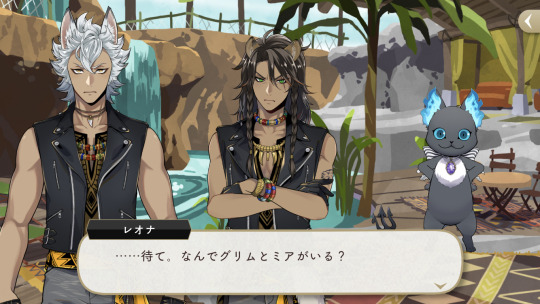
Yuu greets Leona as they arrive. Leona asks why Yuu and Grim arrived. Jack explains that while talking to Vil and Lilia, they happened to be in the area, and came without permission. Grim laughs and says where people gather, there’s bound to be a delicious meal. Jack says he’s never heard of that. Leona tells Grim he is in the way, and tells him to go home.
Vil tells Leona he better speak quickly otherwise he will leave. Leona gets right to the point. He is inviting Vil and Lilia to his hometown. Jack says that it’s in Sunset Savanna. Leona continues by saying that Tamashina-Mina will be held in the capital of Sunset Savanna, Sunrise City, this weekend.
Grim is having trouble pronouncing Tamashina-Mina. Leona tells him and adds that it means “a gift from heaven”. In other words, it is a festival to pray for rain, and is held every year during the rainy season.
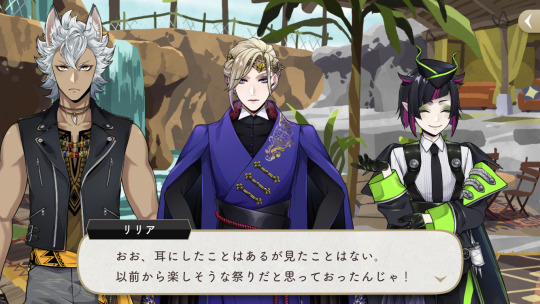
Lilia says he has heard if the festival, but has never seen it. He always thought it sounded like fun. Jack asks if Leona will be going home to participate in the festival. Vil assumes Leona is intending to invite them to said festival. He tells Leona he never does anything with good intentions, and demands to know his purpose. Leona is pleased that it’s easy to talk to them, and says the purpose of the invite is “Catch The Tail”.
Vil has never heard of that. Jack also wonders what it is. Leona explains that it is the name of the competition in Tamashina-Mina. Each person holds a beaded ornament attached to the head. They engage in hand-to-hand combat without using weapons or magic. It is a group match played by teams of three people in a tournament with 16 teams. It is the main attraction of Tamashina-Mina, and the royal family and guests from other countries come to watch.

Grim excitedly exclaims that the prize must be amazing like a year’s supply of tuna cans. Leona replies that he’d like to say there is a prize, but there are no such rewards crushing Grim’s hopes. That said, Leona states that many contestants gather because the winning team members are called Sunset Warriors. So, basically, they compete for glory.
To be continued
#twisted wonderland#disney twst#twst spoilers#tamashina-mina#translations not 100% accurate#it’s almost 3am so i am going to bed#i’ll tackle the rest later!!
97 notes
·
View notes
Text
Unguloids
Similar to the Molingua, the Unguloids lack front arms and have a pouch in their jaws to grind food. But this group is an even more advanced lineage, with multiple shapes of teeth within this pouch to better process various plants. They have two walking toes with hardened hooves on each.
Unipalas

Pictured: the two-stripe Unipala, a very common species in the forests of Axane.
Like the Gallopes of Faon, these are small, fast herbivores, who rear up on four legs to dash away from predators. These are likely the most primitive Unguloid, as they lack hooves on the first pair of legs. Species live across the plains and forests of Ejoa, Axane and Amki, and are hunted by many predators. Feeding on grasses and low-lying undergrowth, they are like little lawnmowers maintaining the land. Some species are highly social, living in herds numbering in the hundreds, and others prefer smaller groups of five to ten individuals.
Springlegs

Pictured: the Ejoan Highland Springleg, which lives in the far northern mountains of Ejoa.
Highly adapted to life in the rugged mountains of Ejoa and Axane, these animals can leap incredible distances and climb nearly vertical cliffs. Some species can also be found in rocky desert regions and highland forests. They are even found beyond the tree line in extreme alpine regions, and have a thick bristle coat to ward off the cold, as well as unique, sloped shells so snow will slide off them. They are not picky eaters and will feed on any plant material they can find in these barren ecosystems.
Domeheads

Pictured: the Deadland Domehead, native to the incredibly arid “Deadlands” of western Ejoa.
One of the only large herbivores in the high deserts of Ejoa, Domeheads store fat in a hump on the tops of their heads. This allows them to go long periods of time without food as they migrate from oasis to oasis, avoiding packs of dune vultures and Wyverns. These strange animals are considered semi-domesticated and were used as beasts of burden by desert communities, and continue to be kept by farmers in arid regions.
Fanshells

Pictured: the King Fanshell, the most iconic species, which is native to the Great Savanna of Ejoa.
A very specious group, Fanshells include domesticated animals such as the Noro as well as savanna and forest dwelling wild species across Ejoa, Axane and Amki. Although not all of them have the spectacular shells of the large open plains species, all of them do have well-armored bodies to protect themselves from predators. Fanshells are very social and most live in large herds.
Buckfangs

Pictured: the spitting buckfang, which is found in the rich temperate rainforest around the Ever Reaching River of Axane.
With saber-tooth projections on their beak, these are very ferocious-looking herbivores. The fangs are not used for food processing, and instead are used for conflict between their own kind. They live in complex harems with one large alpha protecting a group of smaller mates and their offspring. These alphas are very aggressive to any perceived threats. When one of the mates grows large enough, they will either compete for the title of the alpha or be driven out to start their own harem. Some (like the above species) also mark their territory with a strong-smelling liquid produced in a gland on the roof of their mouth. Living in the forests of Axane and southern Ejoa, they are generalist herbivores who will eat anything within their reach.
Tanks:

Pictured: the ten-ridged tank, found on the plains of southern Axane.
The Tanks are so named for their massive sizes and well-armored shells. Most predators would never attempt to kill an adult Tank. Living across the savannas of Ejoa and Axane, these huge herbivores eat grasses and shrubs. Unlike many Unguloids, adults are solitary creatures aside from mating and rearing offspring. They are very territorial and will sometimes fight to the death to protect their land.
9 notes
·
View notes
Video
youtube
The White Backed Vulture Africa's Iconic Scavenger Of The Skies With Mov...
African vultures are a group of vulture species that are native to the African continent. There are several species of vultures found in Africa, each with its own unique characteristics.
Here is some information about African vultures:
Species Diversity: Africa is home to a diverse range of vulture species, including the African white-backed vulture, the hooded vulture, the lappet-faced vulture, the white-headed vulture, the Rüppell's vulture, and the Cape vulture, among others. Each species has its own specific habitat preferences and feeding behaviors.
Habitat and Range: African vultures can be found in various habitats across the continent, including savannas, grasslands, woodlands, and mountainous regions. Their range extends from sub-Saharan Africa to parts of North Africa. Visit nisafari.com for travel guides and more touristic destinations. Feeding Habits: Like vultures in other parts of the world, African vultures are scavengers and primarily feed on carrion. They have a keen sense of smell and excellent eyesight, which helps them locate carcasses from long distances. African vultures play a crucial role in cleaning up the environment by consuming decaying animal matter.
Conservation Status: Unfortunately, African vultures are facing significant threats and are declining in numbers. Habitat loss, poisoning from ingesting toxic substances, illegal wildlife trade, and collisions with power lines are some of the main factors contributing to their decline. Several African vulture species are now listed as critically endangered or endangered by the International Union for Conservation of Nature (IUCN).
Conservation Efforts: Conservation organizations and governments are working to protect African vultures and their habitats. Efforts include establishing protected areas, implementing anti-poisoning campaigns, promoting sustainable land-use practices, and raising awareness about the importance of vultures in ecosystems.
Cultural Significance: African vultures hold cultural and spiritual significance in many African societies. They are often associated with death, rebirth, and spiritual cleansing rituals. Some communities consider vultures as sacred birds and believe they have the power to carry messages between the living and the spirit world. African vultures are an integral part of Africa's ecosystems, and their conservation is crucial for maintaining the balance of nature. Efforts to protect and conserve these magnificent birds are essential to ensure their survival and the health of African ecosystems.
#AfricanVultures #Conservation #Ecosystem #Scavengers #Biodiversity #africa #Vulture #Africa
3 notes
·
View notes
Photo




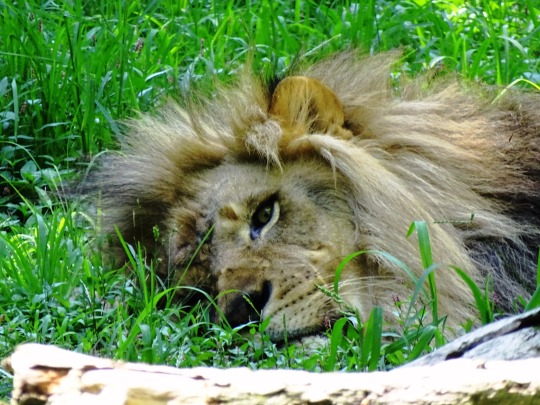

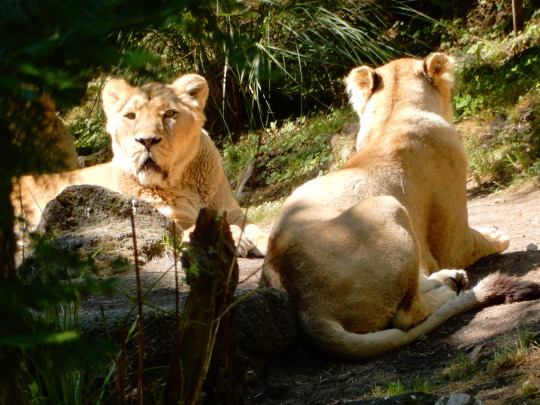
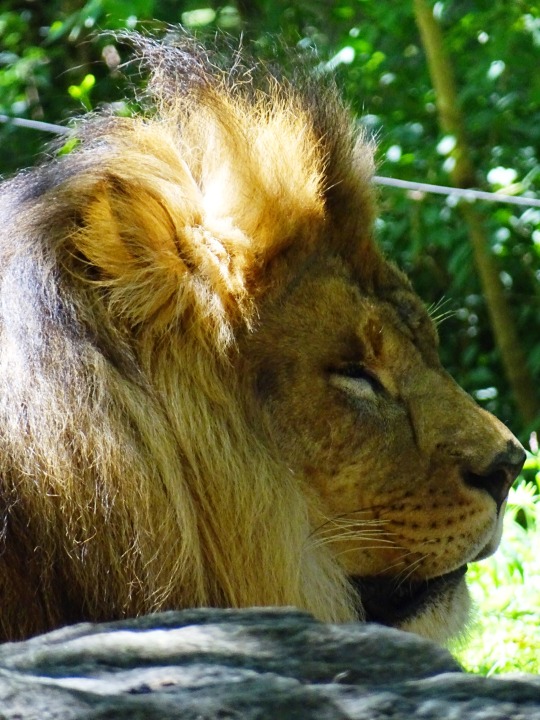
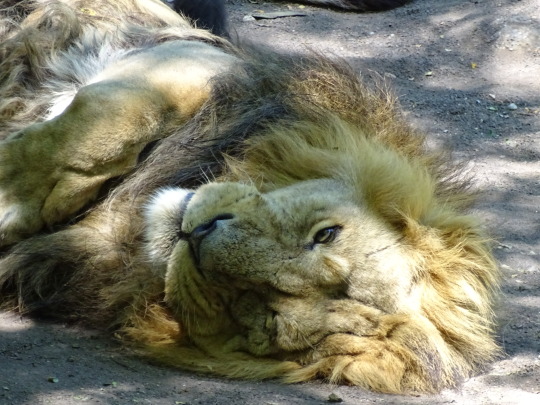
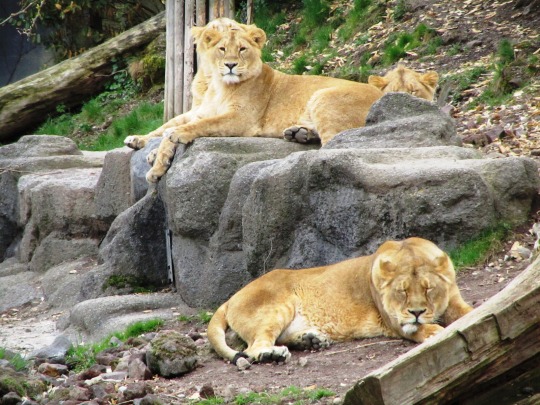
World Lion Day
World Lion Day on August 10 aims to raise awareness about the plight faced by lions. Scientifically known as ‘Panthero Leo,’ lions are one of the most well-known and popular animal species out there. They are called the ‘Kings of the Jungle’ due to their arresting and fearsome personalities created by their great bodies and heavy, shiny manes. A lion’s powerful roar is second to none, and it can be heard even five miles away. Owing to the pop culture icons like Simba from “The Lion King”, lions are also loved by children. However, while lions existed in large populations 100 years ago, today, their numbers are just below 50,000 worldwide as a result of poaching and hunting. World Lion Day, therefore, brings attention to this endangered species by raising funds and amping up protective measures.
History of World Lion Day
The first World Lion Day came into being in 2013. It was headed by Dereck and Beverly Joubert, a couple who are passionate about preservation and wild cats. After realizing that lion populations have drastically decreased worldwide, the Jouberts approached “National Geographic” for the brand’s help. Forming a partnership with them, the couple came up with the Big Cat Initiative (B.C.I.) in 2009. The B.C.I.’s main goal would be to protect and preserve the remaining lion species in the world. While aspects like deforestation, climate change, and human intervention may have impacted lion populations, studies have shown that their extremely low numbers may also have to do with ice ages and natural environmental disasters that have led them to becoming secluded in only a few countries of the world, namely India and South Africa. To date, the B.C.I. has made substantial leaps, from getting 150+ grant awards to reducing almost 3,000 threats to 3,000 wild cats to removing 13,000 life-threatening snares.
The lion comes from the ‘Felidae’ family of cats, and it is considered to be an apex predator. It is the second-largest cat weighing around 300 to 600 pounds, with the first being its cousin, the tiger. An average lion’s body is muscular with a short round head and ears, and a tufty tail. Its sex can be identified through its heavy and luscious mane, which are absent on lionesses. Lions also happen to be the only cats who roam around in large groups known as prides. Scientists believe that lions do so because it is easier to catch prey in the wild. Their natural habitats are savannas and grasslands. You will most likely find a pride of lions near water bodies as they strategically wait for prey to come there for a drink and then pounce on them.
World Lion Day timeline
1758 ‘Felis Leo’ is Coined
Carl Linnaeus, a Swedish zoologist and botanist, invents ‘Felis Leo’ as the scientific name of lions.
1996 Vulnerable Species
The lion is placed on the Red List of the International Union for Conservation of Nature due to its African population decreasing by 45% since 1990.
2009 Big Cat Initiative is Formed
Dereck and Beverly Joubert, in partnership with “National Geographic”, start the Big Cat Initiative to save lions.
2013 The First World Lion Day
The B.C.I. announces the first World Lion Day in order to include the world in lion preservation efforts.
How to Observe World Lion Day
Vow to protect lions
Refuse to buy lion products
Donate your assets
No matter how you choose to spend the day, make sure it is worthwhile by vowing to protect lions. Lions are natural predators that are necessary to keep prey populations in check. Apart from such environmental benefits, lions are extremely beautiful and majestic animals that have ruled the pop culture scene for a long time. So, let’s take a vow to be there for them.
Whether you are looking to buy a new bag or coat, or any other similar paraphernalia, make sure you know where it is coming from. Refuse to buy lion products (or other animal skin products) to reduce sales and market value.
Time and money are the most valuable assets you can give in today’s world. Look out for national and international organizations that protect wild cats, and invest in them by donating your money to the cause. If you cannot donate, you can volunteer your time by either helping the organizations with volunteer work or by promoting the organizations in your circles.
5 Facts About Lions That Will Blow Your Mind
Younglings have spots on their skin
Manes change over time
Cubs are raised together
Females are mightier hunters
Heavy and long sleepers
Young lion cubs are born with spots on their coats, but these tend to fade away as they grow older.
A lion’s mane will change color, going from light to dark, as it grows older.
Lion cubs are generally brought up together by all the females in a pride.
Lionesses are better hunters than their male counterparts, and it is for this reason that they hunt 80% to 90% of the time.
Lions will sleep for at least 20 hours a day.
Why World Lion Day is Important
It’s a celebration of lions
It’s a reminder about the importance of preservation
It’s a celebration of the natural environment
For most of us, “The Lion King” was a huge part of our childhood. We rejoiced at the birth of Simba but also grieved with him over his father’s death. Holding such sweet memories and images, we cannot let the beloved animal go extinct. Let’s come together on August 10 to protect lions from all dangers.
Preservation has become a necessity, more now than ever. We cannot hope to live on a peaceful and resourceful Earth if we keep depleting it of its natural resources, be it water, fuel, or animals. We must preserve and protect the Earth for ourselves as well as future generations.
The natural environment has given us countless gifts. From food for taste and survival to medicinal properties to inspiration for technological inventions, nature has continued to reward us since time immemorial. We must therefore honor, respect, and celebrate it.
Source
#Zoo Zürich#2017#Bronx Zoo#my favorite zoo#New York City#summer 2019#original photography#animal#flora#fauna#outdoors#USA#Schweiz#Switzerland#World Lion Day#10 August#WorldLionDay#landmark#tourist attraction#cityscape#nature#vacation#travel#international day
15 notes
·
View notes
Text
Once roaming freely across vast savannas, Africa's iconic rhino populations have faced a steep decline since the 1970s due to poaching and habitat loss. But there is hope as Kenya’s conservation efforts have made significant strides in protecting this endangered species. In total today, Kenya has 1,977 rhinos, including 1,004 eastern black rhinos, 971 southern white rhinos, and two critically endangered northern white rhinos.
The country's black rhino population has surpassed its national recovery target of 1,000 black rhinos, marking a remarkable 150% increase from around 400 in the 1980s according to the Kenya Wildlife Service (KWS). This achievement positions Kenya as a leader in black rhino conservation, behind South Africa and Namibia.
Recently, Kenya made international news with the successful translocation of 21 black rhinos to Loisaba Conservancy as part of a strategy to redistribute the rhino population. The translocated group, consisting of 10 bulls and 11 cows, originated from Nairobi National Park, Ol Pejeta Conservancy, and Lewa Wildlife Conservancy. Their arrival at Loisaba marks the species' return to the area for the first time since 1976. This relocation was prompted by the limited space available in Kenya's 16 black rhino sanctuaries. Overcrowding in these sanctuaries poses various risks, including territorial conflicts, aggression among male rhinos, and a decline in birth rates.
4 notes
·
View notes
Text
Twisted Wonderland World Map (personal headcanons)
Not me making my first tumblr post in literal years to post a map I made on Inkarnate of a gacha game I got obsessed because the canon map is ass
Anyways, hello and welcome to my reinterpretation of the world of Twisted Wonderland, complete with all of the countries we know about and not just the ones where our main cast comes from, complete with the “Far East” country that is mentioned in the Endless Halloween event stories, which I have lovingly dubbed Fantasy China :)

This map is only loosely based on the canon locations because the vast majority of them don’t take potential climate and geography of where these kids are supposed to come from into consideration at ALL (granted, it was hard to realistically fit two poles in). I made the Kingdom of Heroes its own landmass because the continent it was on in canon was already busy enough, and Pyroxene (the better name for the Shaftlands) is supposed to be huge. Sunset Savanna doesn’t look that big in canon, but it logically should be, grasslands are ALWAYS big biomes.
I wish we had more named cities :’) I placed capital icons where I thought capitals of those countries might be. I have more thoughts on my creative decisions when making this (more headcanons) should anyone want to know!
THIS IS FREE FOR ANYONE’S USE!!! PLEASE just credit me if you DO end up using it, and PLEASE don’t make edits to this hyperfocus-session project I made out of love and frustration for this stupid game. I worked very hard on making all of the colors look nice :( took hours
#twisted wonderland#twst#inkarnate#fistfighting Yana Toboso with my hubris#don't even get me STARTED on all of the historical political and species questions I have that are unaddressed by the game#I haven't thought this hard about a Disney property ever I think#made this entire thing while watching Castlevania and Inuyasha
15 notes
·
View notes
Note
oh hay! neat blog :) i am a wakfu player myself in the upper lvls (202-194 fogger and rogue main!) also nice icon trans kitty forever :)
TY! The main purpose of this blog is to highlight and document the game, since there's not that much documentation of parts of it, particularly in English.
Glad to see some fellow players here! I'm in the 180 range rn myself with my panda. Been playing on and off across the years.
and yes, I have a soft spot for Savanna so she's the pfp :3
3 notes
·
View notes
Text
ᒪIꪀ ᑕᖇᑌOᖇ
As there are some diversity between Diabolik lover and Twisted wonderland verses, please pay mind to each section's importance!
Gender Female
Age 17
Height 5' (w/o heels) 5'4" (w/ heels)
Weight 91 lbs
Likes Swimming, running, martial art, most physical activities, warm food, hugs (but she will never admit), good people, comedy/horror/mystery movies
Dislikes Being bored, strong smells and textures, being threatened and underestimated, hot temperature
Personality She is a hard shell to crack. At first, she acts very distant, cold and mean. She can be sarcastic if she doesn't like you. She is arrogant in the public profile, attracting many enemies. She will sass her way into a mess and sass her way out all the same. She is very proud of herself for several reasons. But she does have her downfall at times. When she's down she tends to isolate herself and wants to be left alone for days. She alters from introvert from extrovert tho it really depends on her moods. She would accept warm food as gift but she's too suspicious to eat it alone. Once you're close to her and understand her, her sarcasms are actually funny. Sometimes, she can be sweet. She is very protective and keep her friends out of danger. She's not naturally academic smart, but if she puts her mind in it, she could get good grades. She's still more prone to her physical exercises and getting stronger. Though she is not a muscle head. She's sneaky and smart, has a sharp tongue and very cautious at all time!
Icon used from "Dreaming freedom", Jeongmin Choi
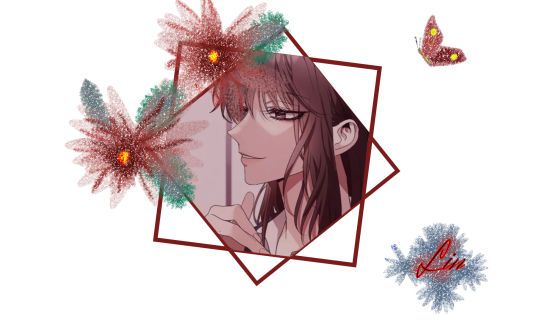
Diabolik Lovers universe
Species human
Blood type/taste Her blood type is a common A+. It should taste decent. However due to her diet and mental state, it often taste bitter and sour (just like her soul-). So much that one would find it revolting. Still very full with life source. Just like a horrible medicine that is benefit to one's physical body.
Abilities Spirit summoning; physical strength enchantment, invisibility. Knife throwing, knife fighting, can use just any weapon.
ᗷᴀᴄᴋꜱᴛᴏʀy
Before, it was only her and her mother, living rather peacefully. Her early childhood was decent, she was happy. Until those people would drag her out of her comfort little place and make her into a monster. Those years in her late childhood and early teenage years were hell. She has gained both emotional and physical scars. With grudges she lived on, holding on to the day where she can go back to peaceful days with her mother and her alone... But when she's back, her mother was already gone. The people said she's dead, but she couldn't accept the fact. She didn't see her body, this she believes that they're merely lying to her...
She worked for the organization for a while, observing, waiting to seek her revenge. After training herself through the missions, she managed to escape from there. She killed those she resent the most. However she was badly wounded and fatigued that when she arrived at a big house with someone in front of her, she collapsed and went into coma for three days. (She will end up in either Sakamaki household or Mukami household depending on the rp)
Extras Her ability to summon the spirit that reside in a pendant, is inherited from her father that she had no chance to meet. Her mother only left a note saying it was his possession and shecan have it. It's a black crystal that she wears on her neck. Her ultimate trump card.

Twisted wonderland universe
Hometown Sunset Savanna
Dorm Savanaclaw
Club Equestrian club
Unique magic
“ᴄᴏᴍᴇ ꜰᴏʀᴛʜ, ᴍy ᴋɪɴ. ꜱʜᴀᴅᴏᴡ ꜱɴᴀᴋᴇꜱ, ᴅᴇꜱᴛʀᴏy ᴍy ᴇɴᴇᴍɪᴇꜱ”
Blot-like snakes comes out from her shadow amd attacks the enemies. She can control them to certain extent. But when angry, she wouldn't control them at all and those snakes will attack just anyone, friend or foe. Those snakes can extend themselves up to 2 metres and also shoot poison. She can only use it up to 15-30 minutes once a few days. It could result in an overblot if she stubbornly, consistently use it. The venom of the shadow snakes are lethal, and Lin's own venom can act as the antidote... But it will still hurt, just not deadly!
Grade Sophomore/ class 2-D
Favourite food Curry and rice
Best subject Flying
ᗷᴀᴄᴋꜱᴛᴏʀy
She was born in a secluded place in Sunset Savanna. It was a large family. She had a lot of aunt and uncles, many elder people, married and singles, and many siblings. She remembers playing with them and being happy. Until eventually they disappeared one by one at the age of 10. She was very confused and asked her parents, but they refused to tell her why. They shut her mouth, only said 'sorry'.
Until she found out what was happening. At her 10th birthday, she was taken to a dark and cold room, needles pierced her skin and ink intruded her flesh. What shocked her the most was that these act are done by none other than her so called family members. Even her father and mother avert their gaze and neglected her shouts and screams.
The twisted fate of a snake descendant, why her mother has those scale tattoo all over her body, as well. They perform that so called tradition to pass over the venom of an ancient snake, mixing the ink with small poison dose. There were only a few success that only Lin survived and all her older siblings were... gone. And it'll keep happening, her younger siblings are taken as well... one by one, they leave her.
She remembers not going out anymore and only hide away in her small, cramped room. But those people would drag her out to test if she's producing venom properly. From her developed canines that are now fangs, they would draw venom from time to time. With a boost of magic attributes, she would often go out of control and destroy her pillows out of stress. Tearing them with her teeth. And then it became her whole bedroom, the garden and such. She wanted to flee from that place. That's all she knows. She doesn't want to see her little siblings going to their doom one after another.
Such that one day she ended up going berserk and those venomous snake come out of her back, causing a wreck to the house she hated so much. Those people were finished by her. Gladly, those snakes avoided the only child that were left. Her cousin whose 10th birthday is that day. When she gained consciousness back, she cried, much to the surprise of the little boy. Apologizing to have killed his family. He didn't know what to say as well, but he was scared of her for sure. But she only protected him from being dragged by those adults. He was grateful.
They went to the nearest town and reported that their house was attacked by wild animals, they were accepted by an orphanage. Lin didn't like living there as well she started working out of the orphanage and saved up enough money to buy a small rumored-to-be-haunted apartment in a quite cheap price for her and her cousin brother and moved there with the assistance of her delinquent friends.
She got invited to the nrc shortly after much to her inconvenient. She managed to keep her brother in the apartment and often visit him to restock his food and such.
Extras
She wears a full body suit to cover her scale mark tattooes. Because she gets strange gazes if she walks around without covering them. For the sake of blending in, she likes covering from her neck to toes.
She often gets into fight with savanaclaw students.
Closeted transmasc.
Works at the monstro lounge despite her housewarden's displeasure.
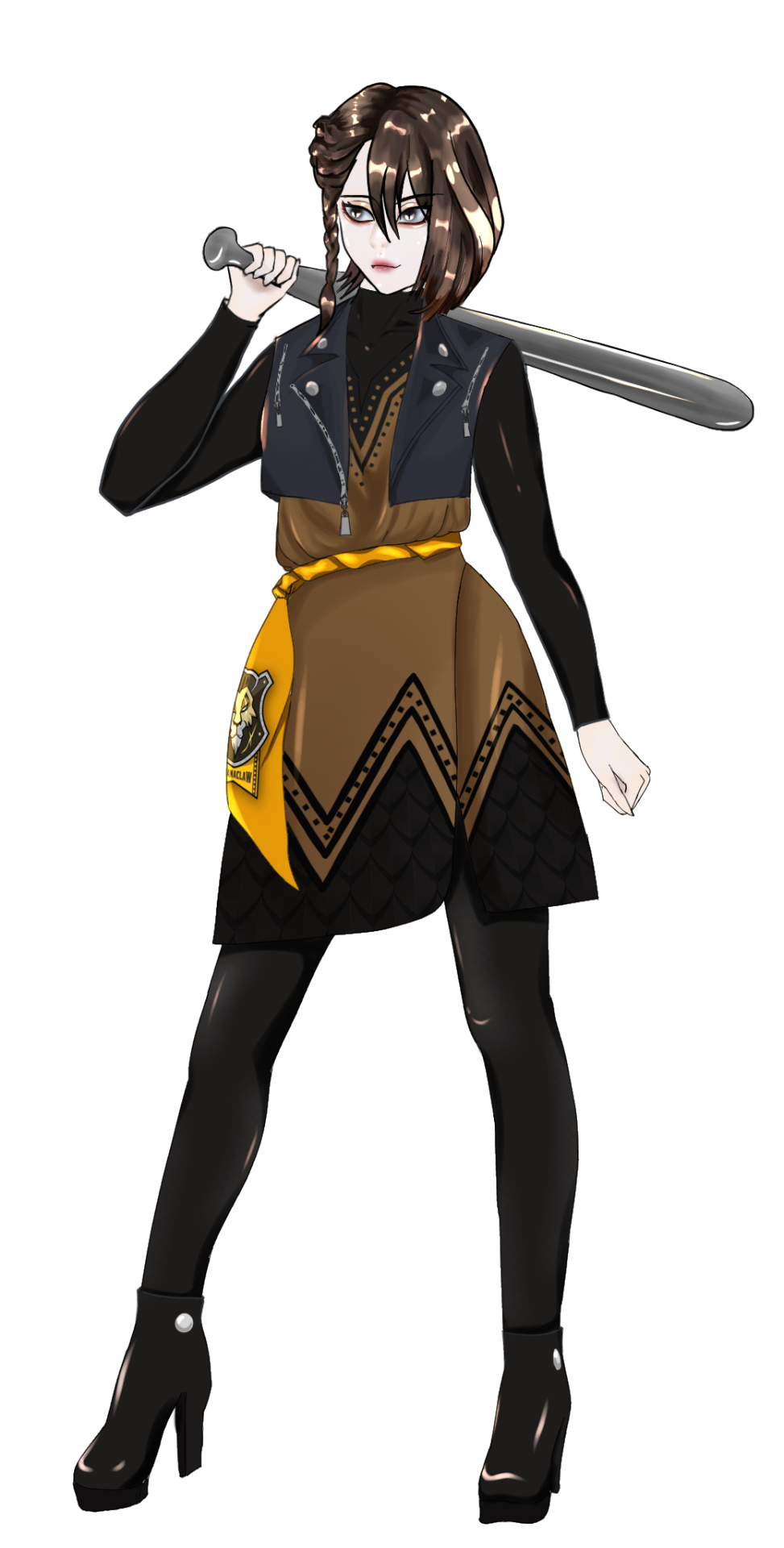
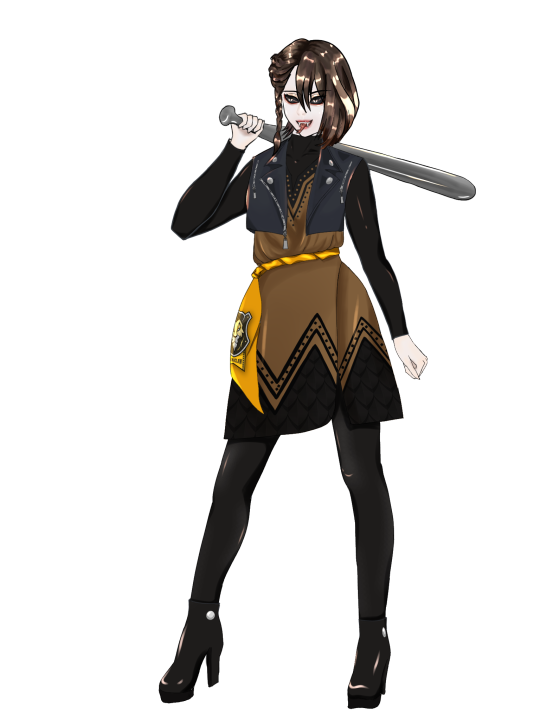
*Changes may occur.
#┊ ┊Character sheet┆ ┆ ┆જ ✾#┊ ┊Assassins Do kill┆ ┆ ┆જ ✾#┊ ┊Dozens died trying to be me┆ ┆ ┆જ ✾#Lin Cruor#twisted wonderland#twst#twisted wonderland original character#diabolik lovers#diabolik lovers oc
6 notes
·
View notes
Text
Anybody wanna vote on the biome for my base in an upcoming singleplayer series? You can use the poll but also here are the options if you'd rather just vote via this post:
Orchard
Jungle/Sparse Jungle
Araucaria Savanna
Tropical Rainforest
6 notes
·
View notes
Photo

made a new icon for myself on discord bc i just love drawing this lad so much with this new brush! can u tell i’m a savanna stannie yet ahaha
2 notes
·
View notes